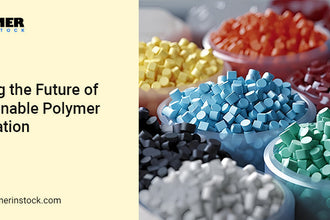
The polymer market in India has witnessed a notable decline in prices for HDPE (High-Density Polyethylene) regrinds, particularly in the categories of 1-10 litre containers and HDPE drum regrinds. Several interrelated factors have contributed to this trend, reflecting broader economic, environmental, and market dynamics. Here’s a detailed exploration of the reasons behind the current price drop:
1. Oversupply and Inventory Buildup
One of the primary reasons for the decrease in Recycled HDPE Products prices is the oversupply in the market. Indian manufacturers have ramped up their recycling and production capacities in response to previous shortages and increasing demand. This has led to a surplus of HDPE regrinds, particularly in the 1-10 litre container and drum segments. With more material available than the market currently demands, prices have naturally fallen to balance the supply and demand equation.

2. Decrease in Raw Material Costs
The cost of raw materials significantly impacts the price of recycled HDPE products. The prices of virgin HDPE, influenced by crude oil prices, have seen a downward trend recently. This reduction in the cost of raw materials lowers the overall cost of production for HDPE regrinds, which is then reflected in the market prices. Additionally, lower crude oil prices reduce transportation and processing costs, contributing further to the price decline.
3. Reduced Industrial Activity
The economic slowdown has led to a reduction in industrial activities across various sectors that extensively use HDPE containers and drums for recycled HDPE products. Industries such as chemical manufacturing, food processing, and consumer goods have scaled back production due to lower demand. This reduction in industrial activity translates to decreased demand for HDPE regrinds used in the production of containers and drums, thereby putting downward pressure on prices.
4. Environmental Regulations and Recycling Policies
Stricter environmental regulations and increased emphasis on sustainable practices have led to more efficient recycling processes and higher availability of regrinded materials. The government’s push towards a circular economy and better waste management practices has resulted in more HDPE being collected and processed. This increase in recycling efficiency has contributed to the greater availability of regrinds, leading to lower prices as supply outstrips demand.
5. Fluctuations in Export Demand
The global demand for Recycled HDPE Products or recycled polymers, including HDPE regrinds, can influence local prices. Recently, fluctuations in export demand due to geopolitical tensions and trade policies have affected the Indian market. Reduced export orders mean more material remains within the country, increasing local supply and driving down prices. Changes in trade dynamics with major importers like China and Southeast Asian countries have also impacted the market.
6. Technological Advancements in Recycling
Advancements in recycling technologies have made the processing of HDPE more efficient and cost-effective. Improved sorting, cleaning and processing technologies increase the yield of high-quality regrinds from collected waste. This efficiency reduces the overall cost of producing regrinds and contributes to lower market prices. As these technologies become more widespread, the cost benefits are passed on to consumers.

Conclusion of Recycled HDPE Products
The decline in prices for HDPE regrinds (1-10 litre containers) and HDPE drum regrinds in India can be attributed to a combination of oversupply, reduced raw material costs, decreased industrial activity, stricter environmental regulations, fluctuations in export demand and technological advancements in recycling. These factors highlight the complex interplay of market dynamics and the importance of monitoring economic and industry trends to understand pricing fluctuations.
By staying informed about these factors, stakeholders in the polymer industry can better navigate the current market conditions and make strategic decisions to optimize their operations and investments.



 +971 509205838
+971 509205838










